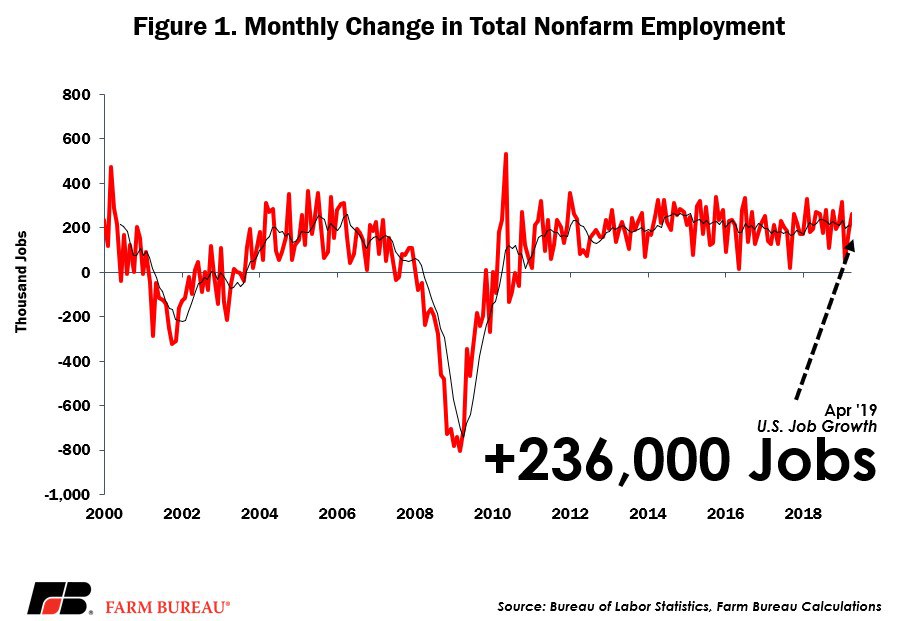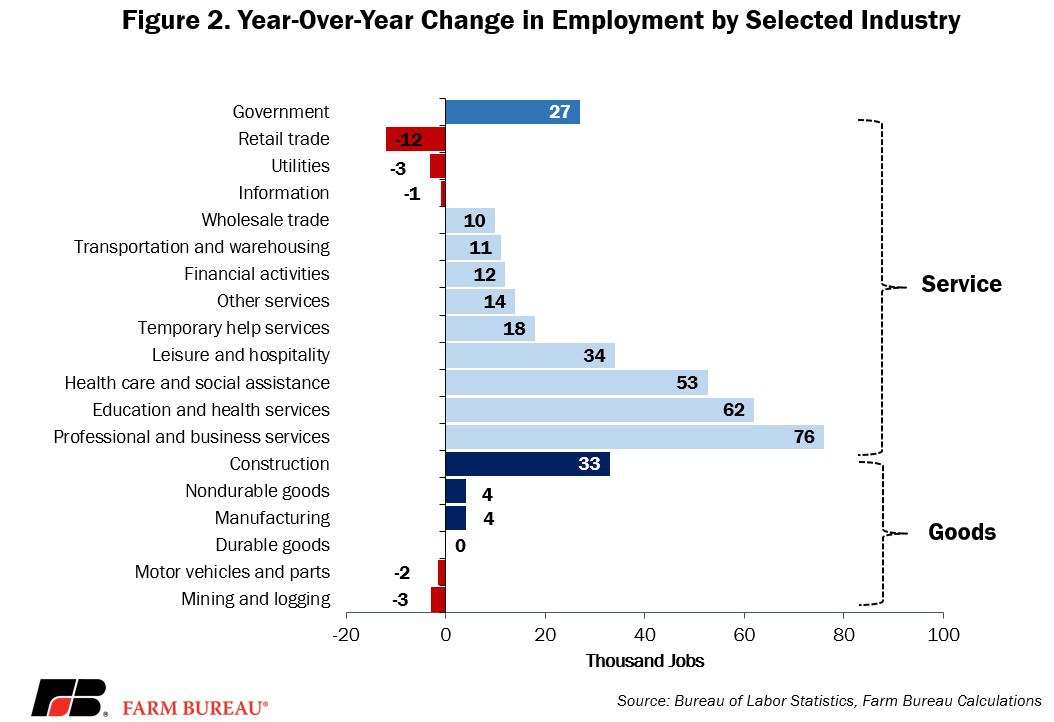Headline Numbers are Solid, but Jobs Report Requires a Deeper Dive
TOPICS
UnemploymentBob Young
President

Bob Young
President
Like the first quarter 2019 gross domestic product report released on April 26, the jobs report released on Friday had great headline numbers, but things looked a little dubious once we dug a little deeper. The GDP report had the economy growing at 3.2% in the first quarter. The jobs report for April indicated 236,000 new private sector slots.
Whereas the GDP report leaned on declining imports and growing inventories to boost its number, the jobs report showed very little increase in the actual goods-producing part of the economy and a great reliance on service-related employment.

Overall, goods-producing employment rose a scant 34,000 jobs. Specialty trade contractors, in particular those associated with nonresidential construction activity, grew by 22,100 jobs out of that 34,000 top-end number. Manufacturing jobs rose by only 4,000 positions, with no increase at all in durable goods manufacturing. Among nondurable goods – where all of the 4,000 manufacturing slots came from – food manufacturing was almost 3,000 positions.
Service-providing jobs, on the other hand, grew by 202,000 slots. Retail trade shed 12,000 positions, with department stores, warehouse clubs, sporting goods and clothing stores all sloughing off employees.
Administrative and support services, including temporary services, added 54,800 new jobs. Temporary services and services to buildings and dwellings combined for 38,500 slots of that total.
And continuing the long historical trend of health care slots, 62,000 new positions were filled in the education and health care areas, with 27,000 of those in health care. In addition, there were 26,300 new jobs in individual and family service social assistance. Also in the service area, food services added 25,000 positions.
State and federal jobs netted each other out with the federal government adding 11,000 jobs and state governments dropping 11,000. Local government, however, added 27,000 new positions, roughly split between education and noneducation positions.

The unemployment rate slid to 3.6%, the lowest rate since December 1969. But part of this drop in the unemployment rate was driven by a 0.2% drop in labor force participation. While this was down from last month, the participation rate of 62.8% was the same as this time last year.
Earlier in the week, the Bureau of Labor Statistics released a report indicating productivity increased by 3.6% in the first quarter of 2019. For 2018, productivity rose 2.4%. This goes well with the 3.2% rise in average hourly earnings for the year.
A dollar earned in the service sector spends just a well as one earned making things, but the downturn in labor force participation rate raises at least one eyebrow.
